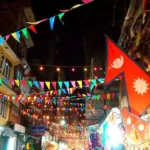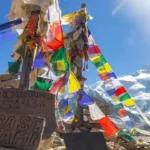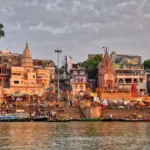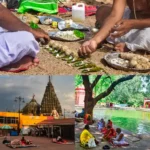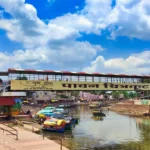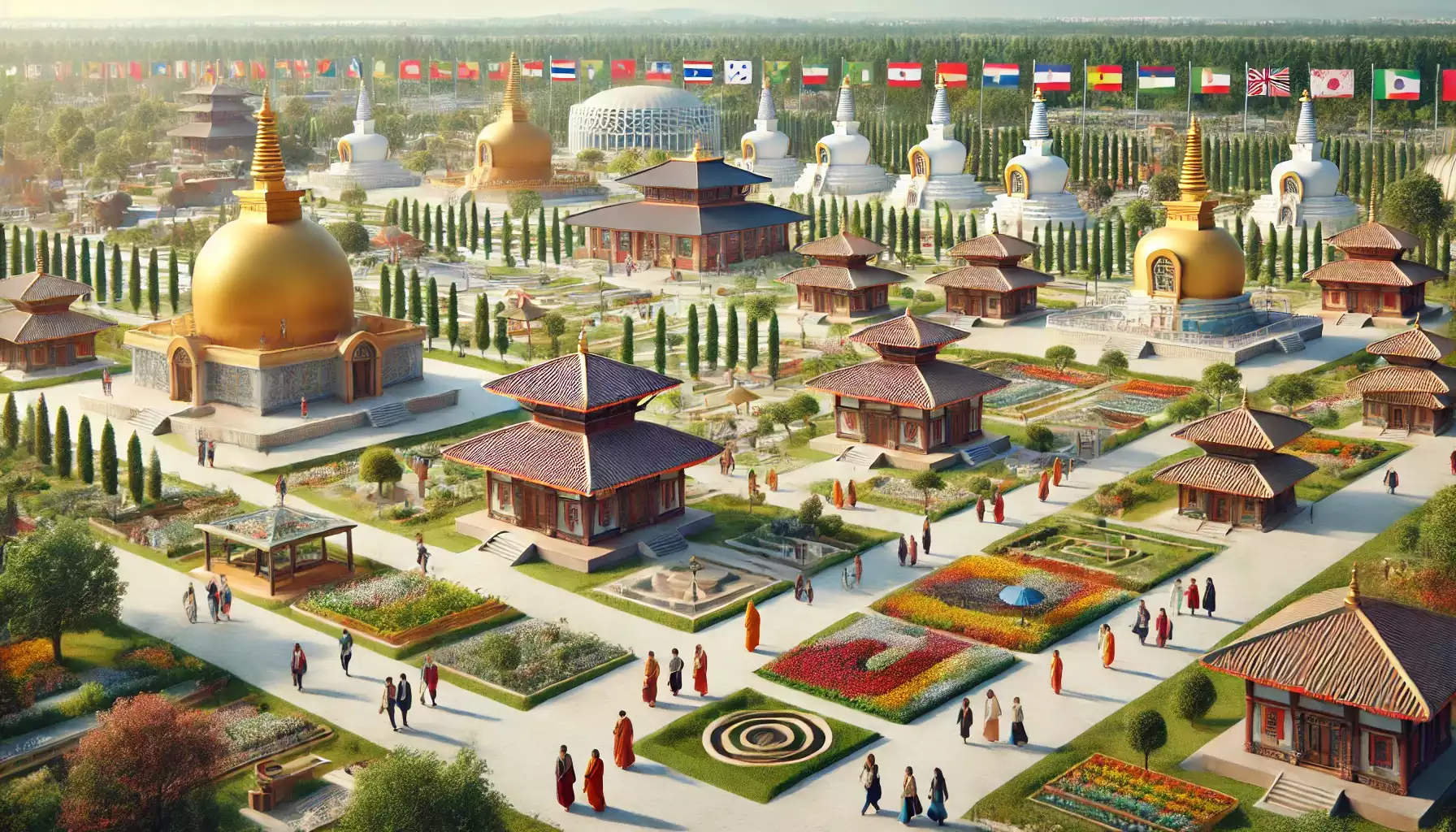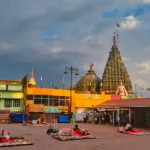The Birth of the Buddha – A Historical Overview
Around 623 BCE, in the tranquil gardens of Lumbini, Queen Maya Devi gave birth to a child who would change the course of human spirituality—Siddhartha Gautama, later known as the Buddha.
According to legend, Queen Maya Devi was en route to her parental home in Devadaha when she stopped in Lumbini to rest. While standing beneath a sal tree in the lush Lumbini Grove, she gave birth to Siddhartha. It’s said that he took seven steps immediately after birth and declared, “This is my final birth.”
This momentous event was commemorated centuries later by Emperor Ashoka, a devout Buddhist ruler of the Maurya Dynasty. In 249 BCE, Ashoka visited Lumbini and erected a stone pillar with inscriptions confirming it as the Buddha’s birthplace—a tangible stamp of historical authenticity that still stands today.

The site flourished as a major pilgrimage centre during ancient times but was gradually forgotten and lost under jungle overgrowth. It wasn’t until the late 19th century that Lumbini was rediscovered, reigniting global interest in its spiritual legacy.
Today, that same site—anchored by the Maya Devi Temple and Ashoka’s Pillar—remains a powerful symbol of peace and enlightenment, drawing pilgrims and seekers from every corner of the world.
Exploring Lumbini Today – What to See
Modern-day Lumbini is more than a historical landmark—it’s a spiritual sanctuary thoughtfully designed for reflection, learning, and discovery. Here’s what you shouldn’t miss when visiting:
1. Maya Devi Temple
At the heart of Lumbini lies the sacred Maya Devi Temple, marking the exact spot where Queen Maya Devi gave birth to Siddhartha Gautama. Inside, you’ll find ancient stone ruins, sacred footprints, and the Marker Stone—believed to pinpoint the Buddha’s actual birthplace. The serene atmosphere here is perfect for quiet contemplation.
2. Ashoka Pillar
Just outside the temple stands the iconic Ashoka Pillar, erected in 249 BCE by Emperor Ashoka. Its inscription is the oldest known written reference to the Buddha’s birthplace, anchoring the site in recorded history.

3. Puskarini Sacred Pond
Adjacent to the temple, the Puskarini Pond is believed to be where Queen Maya Devi bathed before giving birth, and where Siddhartha had his first ritual purification. Today, it reflects the temple in its tranquil waters and serves as a meditative space for visitors.
4. World Peace Pagoda
Built by Japanese Buddhists, the gleaming white World Peace Pagoda stands as a symbol of global harmony. Its peaceful gardens and towering stupa invite visitors to reflect on the teachings of the Buddha in a modern spiritual context.
5. Monastic Zone
Lumbini is home to over 25 international monasteries, each representing unique architectural styles from countries like Thailand, China, South Korea, Germany, and France. The eastern zone is predominantly Theravada, while the western zone hosts Mahayana and Vajrayana traditions. Walking through this area feels like a world tour of Buddhism.
From ancient relics to global expressions of devotion, Lumbini is a living, breathing spiritual museum that invites you to slow down, reflect, and reconnect.
Lumbini’s UNESCO World Heritage Status
In 1997, Lumbini earned a spot on the prestigious list of UNESCO World Heritage Sites—and for good reason. This recognition isn’t just about preserving a historical site; it’s about honouring a place that continues to shape spiritual thought and peaceful philosophy across the globe.
The UNESCO designation acknowledges Lumbini as a place of “Outstanding Universal Value.” It protects not only the Maya Devi Temple and Ashoka Pillar but also the surrounding monastic zones and sacred landscape, ensuring they’re preserved for future generations of pilgrims, scholars, and travellers.

This global spotlight has also brought increased efforts in conservation, archaeological research, and sustainable tourism. International collaboration now helps fund infrastructure improvements while maintaining the site’s peaceful ambience.
Ultimately, UNESCO’s endorsement reinforces what millions already feel—Lumbini isn’t just a dot on the map; it’s a sanctuary of global spiritual heritage.
Spiritual Significance and Pilgrimage
For millions around the world, Lumbini isn’t just a place—it’s a profound spiritual destination. It’s the ground where enlightenment began, and walking its paths today is a deeply symbolic act of inner awakening.
Buddhists from every tradition—Theravada, Mahayana, and Vajrayana—consider Lumbini one of the four most sacred pilgrimage sites tied to the life of the Buddha. Pilgrims often journey here alongside visits to Bodh Gaya, Sarnath, and Kushinagar, retracing the Buddha’s spiritual journey.

The moment you step into Lumbini’s sacred zone, there’s a distinct energy—gentle, peaceful, contemplative. Chanting monks, incense-filled monasteries, and the quiet shuffle of barefoot pilgrims bring the site to life, not with noise, but with presence.
Many visitors meditate beneath the same trees where Queen Maya Devi once stood. Others light butter lamps or join in chanting sessions at international monasteries. It’s not just sightseeing—it’s soul-seeking.
Whether you come as a Buddhist or simply a traveller in search of peace, Lumbini offers space for reflection, healing, and inspiration. It’s a journey inward as much as it is outward.









